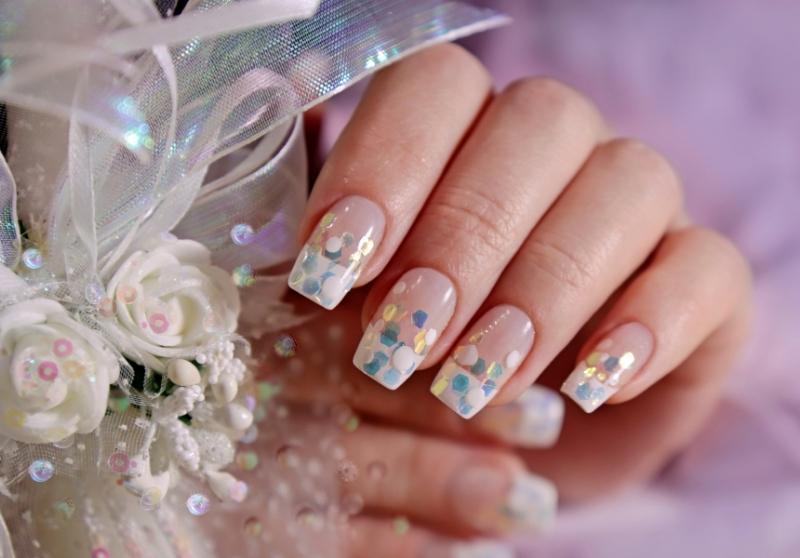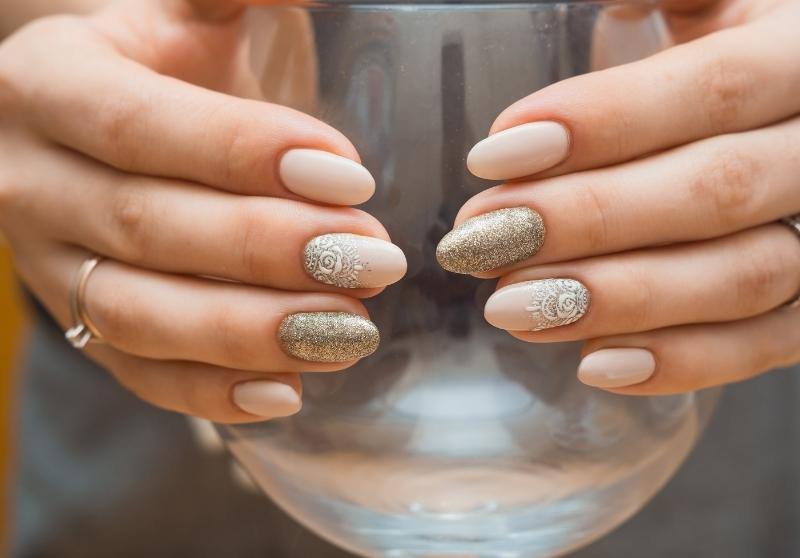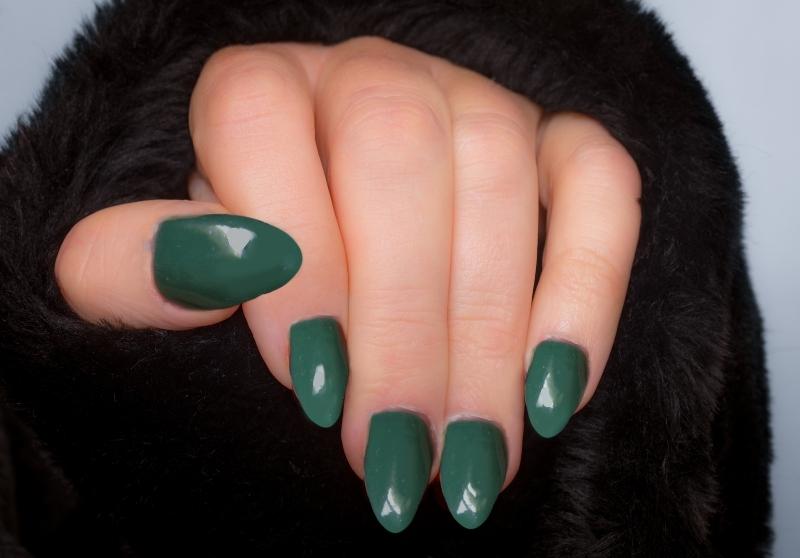Acrylic nails can withstand a lot, but certain chemicals may weaken them. It’s therefore easy to wonder if you can use hand sanitizer on acrylic nails without damaging them. In this article, we explain how hand sanitizer affects acrylic nails and offer tips on what you need to do.

Yes, you can use hand sanitizer on acrylic nails, and you should do so if you don’t have access to handwashing. However, the alcohol in the sanitizer may result in acrylic lifting or peeling as a result of chemical interaction.
Handwashing is therefore preferable to using hand sanitizer if you have acrylic nails but if not, there are ways to ensure your manicure lasts as long as possible.
What Are Acrylic Nails?
Combining a liquid monomer – a strong chemical compound – and a powder acrylic polymer, acrylic nails are created when this paste-like substance is bonded to the natural nail.
This substance is then shaped according to your preference. For example long, ovular nails, or shorter square tips – and hardened to add strength and thickness to the nail.
They differ from gels as they don’t require a UV light to set and tend to be a bit stronger. They also differ from dip powder manicures, even though both start off in a powder form.
If you take care of your acrylic nails, they can last anywhere up to two months. However, you’ll need a fill within that period in order to prevent a gap from forming between the acrylic layer and your natural nail.
This fill also helps to minimize any lifting of the acrylic.
You cannot remove acrylic nails yourself, so don’t even think about picking them.
Go to a salon to remove them so as to reduce any damage, or follow our advice below for at-home removal.
Can I Use Hand Sanitizer On Acrylic Nails?

Live Science reports that alcohol-based hand sanitizers with over 60% alcohol content are the most effective at controlling the spread of bacteria and viruses.
However, whilst this alcohol works to protect us from potential infection, it can wreak havoc with a new manicure.
Whether you have acrylic or gel-based polish on your nails, the alcohol will interact with either the acrylic or gel and may cause some lifting.
So, whilst you can use hand sanitizer on acrylic nails, it’s best to rely on handwashing instead. If you must use sanitizer, then try to limit it to your skin and fingertips, and wipe any excess sanitizer off your nails so as to minimize its interaction with the acrylic.
Handwashing may also cause some chipping or flaking of your nails, however. Nails absorb the extra moisture from the water, which makes them softer. Even just 20 minutes in hot water can cause acrylic nails to fall off.
This may damage the natural nail whilst causing some peeling of either acrylics or gels.
If you can find alcohol-free non-toxic hand sanitizer that still protects against germs and bacteria, this will be better for your acrylic nails.
Look for ingredients like benzalkonium chloride to ensure that you’re still benefitting from protection.
Making it a regular practice to wipe down high-touch areas like your phone can also help to prevent germ build-up in the first instance. This may then reduce your need for hand sanitizer overall.
Does Sanitizer Affect Nails In General?
Alcohol-based hand sanitizer, as well as waterless hand sanitizer, causes brittle, dehydrated nails, according to Dermatology Times.
Hand sanitizer can dry out the skin of hands, as well as the nail beds and cuticles. It will also interact with the top coat used by your nail technician for manicures.
The best way to protect your nails is to keep them hydrated. Soak them in vitamin E oil regularly, and use cuticle oil every night.
Try to keep your acrylics away from overly-hot water, as this will result in peeling or lifting. Use sunscreen, too, so as to prevent the sun’s UV rays from damaging your manicure.
You can also help your acrylics last longer by wearing household gloves when cleaning and using strong chemicals such as detergents.
These chemicals will also interact with your acrylic, so ensuring that there’s a barrier between them and your nails will help your acrylics to remain intact.
How Do You Disinfect Acrylic Nails?

Unfortunately, no matter how clean you are, your acrylic nails will likely pick up some dirt – particularly if you’re a fan of longer lengths.
There are ways to disinfect your acrylics in ways that don’t rely on hand sanitizer. You may find places recommending the use of rubbing alcohol, but we’d suggest avoiding this.
As detailed, the alcohol will cause the acrylic to peel and lift, so will impact your manicure and may result in you having to replace the acrylics sooner than you’d intended.
You can grab a nailbrush and anti-bacterial soap, and use the brush to gently remove any dirt or grime build-up or debris.
If you don’t have a nailbrush, you can also use an old toothbrush to get under the nail.
Remember to always dry your nails thoroughly afterward, to prevent the moisture from causing further peeling.
You shouldn’t keep your acrylics for longer than three months. Otherwise, you will be allowing bacteria to build up under nails, and you may even experience some nasty fungal growth as a result.
Replace your acrylics frequently so as to prevent this from happening, and keep your natural nails, nailbeds, and cuticles hydrated at the same time.
What Chemicals To Avoid With Acrylic Nails

When it’s time to remove your acrylics, this is when you need to take care not to over-expose your skin or nailbeds to acetone.
Acetone is what will lift the acrylic away, but it’s also an intense chemical that may cause irritation.
Soak your acrylics in a bowl of acetone, taking care that only the nails and very fingertips are submerged so as to minimize damage.
You can also try a more precise removal process with cotton buds. Soak the buds in acetone, and then wrap this bud around your acrylic nail.
Secure it with aluminum foil, and leave for around fifteen minutes. You can then use a cuticle pusher to remove excess acrylic from your nails. Take care to always moisturize your nails and hands following this process so as to prevent damage.
If you are concerned, head to a nail technician for professional removal.
